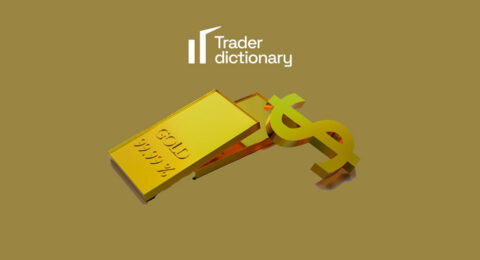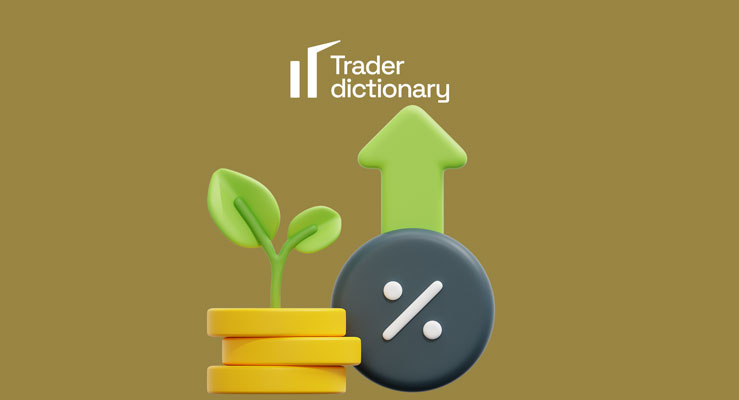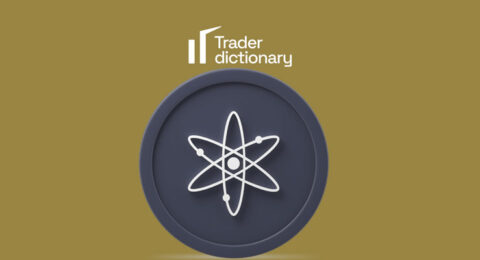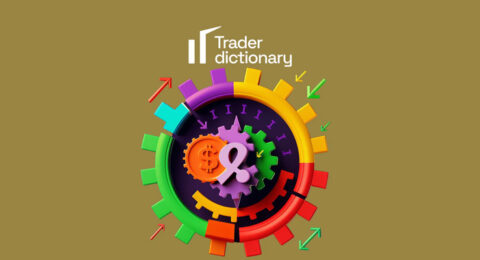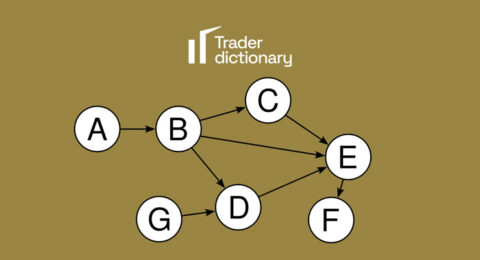In the bustling world of trading, the term “Open Interest” has probably passed by your ears countless times, but have you ever stopped to wonder: What does Open Interest really signify? “Open Interest and Trading Lessons to Know” is the title I’ve chosen for this article, not only to explain Open Interest in a specific and understandable manner but also to share its practical applications in making trading decisions. Let’s explore the secrets behind the numbers and how they affect the market, so that you can seize opportunities and minimize risks in each of your trades.
What is Open Interest?
This is an important concept that every trader needs to grasp for effective market analysis. Open Interest, also known as OI, represents the total number of open contracts – not yet settled or closed – in a specific market at a given time.
- Measuring Interest: Open Interest provides an insightful look into the level of interest or market participation for a specific asset. If OI increases, it signals that more investors are entering the market, possibly due to a new trend forming.
- Differentiating from Trading Volume: Don’t confuse Open Interest with trading volume. Trading volume measures the total number of contracts bought and sold in a trading day, whereas Open Interest is the number of existing open contracts.
- Indicator for Trends: A sudden increase in Open Interest, accompanied by positive price volatility, is often seen as a sign that the trend is strongly supported. Conversely, if OI decreases along with a price drop, it might signal a weakening of the trend.
- Determining Market Strength: Open Interest can help investors evaluate the strength or weakness of a specific price movement. For example, an increase in OI in a rising market indicates strong support from new investors, making the uptrend more robust.
- Warning of Reversals: Sometimes, a divergence between Open Interest and prices can be a sign of an impending reversal. If prices rise but OI decreases, it could indicate that the market is losing momentum and may soon reverse.
Overall, understanding and monitoring Open Interest helps investors gain a clearer view of the market and make trading decisions based on solid information. It’s an indispensable tool in the toolkit of any analyst or professional trader.
Understanding Open Interest
Open Interest is an unmissable concept for those active in the financial trading world, especially in futures and options markets. It’s not just a mere number but a strong dynamic indicator that directly reflects the participation and commitment of investors in a specific market.
- Basic Description: Open Interest represents the total number of open contracts – not yet closed or settled – in a financial market at any point in time. A new open contract increases Open Interest, while closing or settling a contract decreases it.
- Indicator of Liquidity and Interest: Changes in Open Interest can provide valuable information about market liquidity as well as the level of interest or novelty of a trend. Rising Open Interest signals increasing interest and could be the start of a new trend.
- Trend Analysis: Analyzing the combination of Open Interest and price movements can help identify market trends. For instance, if prices rise and Open Interest also increases, it’s a sign of a strong uptrend. Conversely, if prices fall but Open Interest increases, it could be a sign of an upcoming downtrend.
- Risk Warning: Sometimes, a sudden drop in Open Interest, especially when accompanied by a price decrease, can signal a decline in liquidity, making the market more volatile and risky.
- Use in Trading Strategies: Traders can use Open Interest information to build or adjust their trading strategies. For example, in a market with high Open Interest and a clear price trend, buying might be a better option than selling.
Understanding Open Interest not only helps investors gauge the vibrancy and interest in a specific financial product but also helps them uncover potential trading opportunities and avoid undue risks.
Open Interest and Trading Volume
Both are key indicators used by investors to assess the health and direction of the market, but they carry different meanings and applications.
- Basic Definitions: Open Interest indicates the total number of open contracts – not yet settled or closed – in a market. Meanwhile, trading volume measures the total number of contracts bought and sold in a trading day, regardless of whether those contracts have been closed.
- Reflecting Interest and Novelty: An increase in Open Interest indicates new interest and market participation, implying new contracts are being created. On the other hand, high trading volume indicates active movement and transactions in the market but doesn’t necessarily reflect new participation.
- Trend Indicators: A simultaneous increase in Open Interest and price indicates a strong and sustainable trend. However, high trading volume along with a price increase needs to be confirmed by Open Interest to consider the trend’s durability.
- Identifying Reversals: A sudden decrease in Open Interest can signal a reduction in interest and might be a sign of an impending trend reversal. Conversely, a spike in trading volume in one day can indicate a reversal or a price explosion, but it needs to be closely examined with Open Interest.
- Combining Both Indicators: Using both indicators together can provide a deep and comprehensive view of the market. When Open Interest and trading volume both increase, it’s a strong signal that the current trend is likely to continue. Conversely, a discrepancy between them can signal instability and impending changes.
Overall, understanding and analyzing both Open Interest and trading volume can help investors make smarter trading decisions, based on a multidimensional view of market activity and investor interest.
The Importance of Open Interest
Talking about Open Interest in trading isn’t just about mentioning a technical indicator. It’s also an insightful look into market psychology and the commitment of investors to a specific financial product. This is why Open Interest is valued and widely used by professional traders.
- Describing Investor Participation: Open Interest shows the number of open contracts in the market, providing an overview of the level of participation and commitment of investors to a financial product.
- Market Trend Indicator: An increase in Open Interest is often seen as a sign of strengthening current trend strength. It shows growing interest and new market participation, which can reinforce the ongoing trend.
- Value in Technical Analysis: In technical analysis, Open Interest is used to identify the strength of important price levels and market trends. Changes in Open Interest can help traders identify potential reversal points or the continuation of a trend.
- Sign of Change: A sudden drop in Open Interest, especially when accompanied by a significant price change, can be a sign that investors are withdrawing from the market. This could signal a change in market psychology or the start of a new trend.
- Risk Management Tool: Understanding Open Interest can help investors identify market volatility and risk levels. In a market with high Open Interest, volatility may increase, providing both opportunities and risks for investors.
Thus, Open Interest is not just a number but a crucial tool that helps investors understand market movements better, thereby making informed and smart trading decisions. That’s why tracking and analyzing Open Interest is an essential part of every investor’s trading strategy.
Real-Life Examples of Open Interest
To better understand Open Interest and its impact on trading decisions, let’s consider a real-life example. Suppose you are monitoring the futures market for gold and notice some interesting fluctuations related to Open Interest.
- Increasing Open Interest in an Uptrend: Suppose that in one week, the price of gold starts to rise from $1,800 to $1,850 per ounce. At the same time, you notice that Open Interest for gold futures contracts also increases from 200,000 to 250,000 contracts. This increase indicates not only that the price of gold is rising but also that there is new interest and participation in the market, increasing the likelihood that the uptrend will continue.
- Decreasing Open Interest in a Downtrend: In another week, the price of gold drops from $1,850 to $1,800. You see Open Interest decrease from 250,000 to 200,000 contracts. The decrease in Open Interest along with the price drop indicates that investors are leaving the market, which could be a sign of weakening in the downtrend.
- Stable Open Interest in an Uncertain Market: Sometimes, the price of gold fluctuates slightly between $1,825 and $1,835 without any significant change in Open Interest, remaining stable at around 220,000 contracts. This could indicate that the market is in a state of uncertainty, and investors are waiting for more information before making decisions.
- Analyzing Combined Open Interest and Trading Volume: On a trading day, the price of gold increases sharply, with high trading volume, but Open Interest decreases. This could indicate that despite the price increase, the decrease in Open Interest signals that large investors may be taking profits and leaving the market, warning of a potential price reversal.
These real-life examples help clarify the value of Open Interest as a market analysis tool, allowing investors not only to rely on price and trading volume but also on market participation to make more informed and accurate trading decisions.
Is Higher Open Interest Always Better?
To answer this question, we need a deeper understanding of the significance and impact of OI on the market.
- Meaning of High Open Interest: When OI is at a high level, it indicates a large number of open contracts exist in the market, showing significant interest and participation from investors. This can be a sign of a vibrant market with many transactions and high liquidity.
- Impact on Liquidity: High Open Interest often correlates with high market liquidity, making buying and selling easier without causing large price fluctuations. This is particularly important for traders wanting to execute large trades.
- Reflecting Trend Strength: In an uptrend, increasing Open Interest indicates new participation and ongoing commitment from investors, strengthening the trend. Similarly, in a downtrend, an increase in Open Interest can also reflect the strength of the downtrend.
- Warning about Volatility: While high Open Interest can be a sign of an active and positive market, it’s also important to note that it can lead to high price volatility when investors decide to take profits or exit their positions en masse.
- Not Always Good: In some cases, high Open Interest isn’t always a positive sign. For example, in a declining market, high Open Interest might indicate the accumulation of short positions, which could lead to a price collapse if there’s a sudden price reversal.
In summary, while high Open Interest is often seen as a positive sign indicating strong market interest and participation, it can also bring volatility and risk. Therefore, understanding and analyzing Open Interest should be done in the context of other indicators and the overall market situation to make smart trading decisions.
What Happens When Open Interest Increases?
When Open Interest (OI) in a financial market increases, it’s a sign of new participation or increased commitment in that market. This increase can have several consequences and affect how traders and investors assess and react to the market.
- Enhancing Liquidity: As OI increases, the number of open contracts in the market goes up, which often leads to improved liquidity. This makes buying and selling easier, helps narrow the bid-ask spread, and smoothens market functioning.
- Reflecting Increased Interest: An increase in OI is often seen as a sign of growing interest in the market. This could be due to a strong market trend or an important upcoming event that investors and traders want to engage in.
- Determining Trend Strength: In an uptrend, if OI also increases, this is seen as confirming the strength of that trend. Conversely, in a downtrend, an increase in OI also indicates the strength of the downtrend.
- Warning of Price Volatility: A sudden and large increase in OI can be a sign of upcoming price volatility. As new investors enter the market, they may bring new perspectives and expectations, leading to rapid and significant price changes.
- Analysis in Combination with Other Indicators: To fully understand the implications of increasing OI, traders need to analyze it alongside other indicators such as price and trading volume. This analysis provides a more comprehensive view of market psychology and potential directions.
Overall, an increase in Open Interest is an important signal that traders need to closely monitor and analyze. It not only reflects market participation and interest but can also signal upcoming changes in price trends and market volatility.
Conclusion
Through this article, we’ve explored and deepened our understanding of Open Interest – an indispensable concept in the financial trading world. Open Interest is not just a mere indicator but a powerful analytical tool that helps traders better understand market psychology and the dynamics behind price trends.
- The Importance of Open Interest: Open Interest is a crucial indicator of the strength and sustainability of a market trend. Increases or decreases in Open Interest can provide deep insights into investor interest and commitment to a specific financial product.
- Application in Trading: Traders can use information about Open Interest to build or adjust their trading strategies, from identifying market trends to spotting potential reversal points.
- Combining with Other Indicators: For a full and accurate view, traders need to combine Open Interest with other indicators such as price, trading volume, and other technical analysis tools.
Remember, while Open Interest is a valuable tool, using it effectively requires deep understanding and experience in the market. Like all analytical tools, it should not be relied upon solely but combined with multiple methods for a comprehensive and accurate market view.
Hopefully, this article has provided valuable insights, and you’ll apply them effectively in your trading journey. Continue to learn, experiment, and develop your trading strategies to achieve success in the financial markets.


